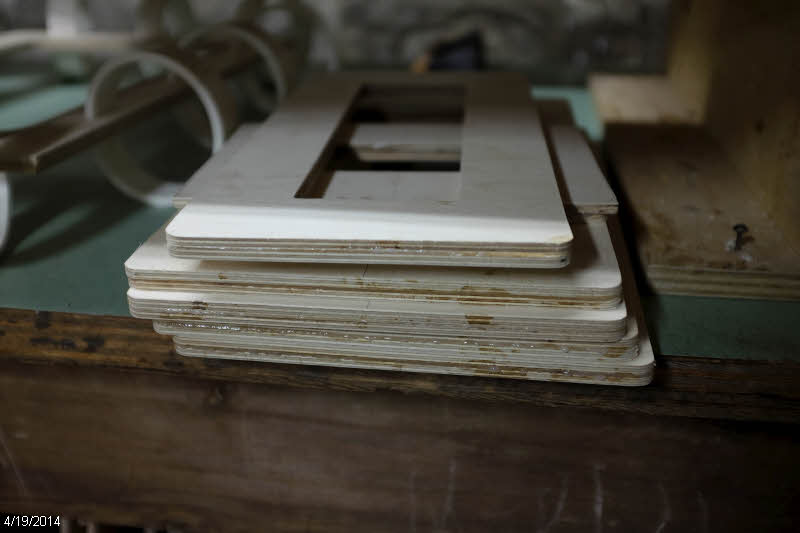Well, here's a job I had been putting off for a while. The cockpit sole (floor) is made up of two layers of 9mm plwood that need to be laminated together. Getting these property aligned and sufficiently clamped was something I had been worried about.
The builder's manual suggests doing this in the boat, first gluing down the bottom layer, then screwing the top layer to the bottom layer and venting the epoxy out through a whole array of 1/4" holes drilled for the purpose. My objections to that method are 1) it's hard to work inside the boat, 2) it would be a pain to fill all those screw and vent holes, 3) it would be more difficult to fillet around the edges.
I decided to laminate the two layers on the bench. And since I have a number of hatches in the floor, I felt I could get good clamps in the center areas of the floor. I made sure I had a good coating of epoxy in the areas around the hatch openings and in the areas where I have drainage channels from the hatches to the gutters along the edge of the floor.
Next I took two 2x4s and jointed one edge straight. I then ran them through the planer to straighten the opposite side and ensure they were the same thickness. I set these up on a table and shimmed them until they were parallel. This allowed me to elevate the parts above the table and have room for clamps.
Then I spread thickened epoxy with a grooved trowel.
And proceeded to use almost every clamp I own in the glue-up!
After the epoxy cured I ran a fillet along the edge of the gutter.
I even remembered to keep my drainage channels clear of epoxy both in the glue up and the filleting!
I'm glad to have that job done.




























